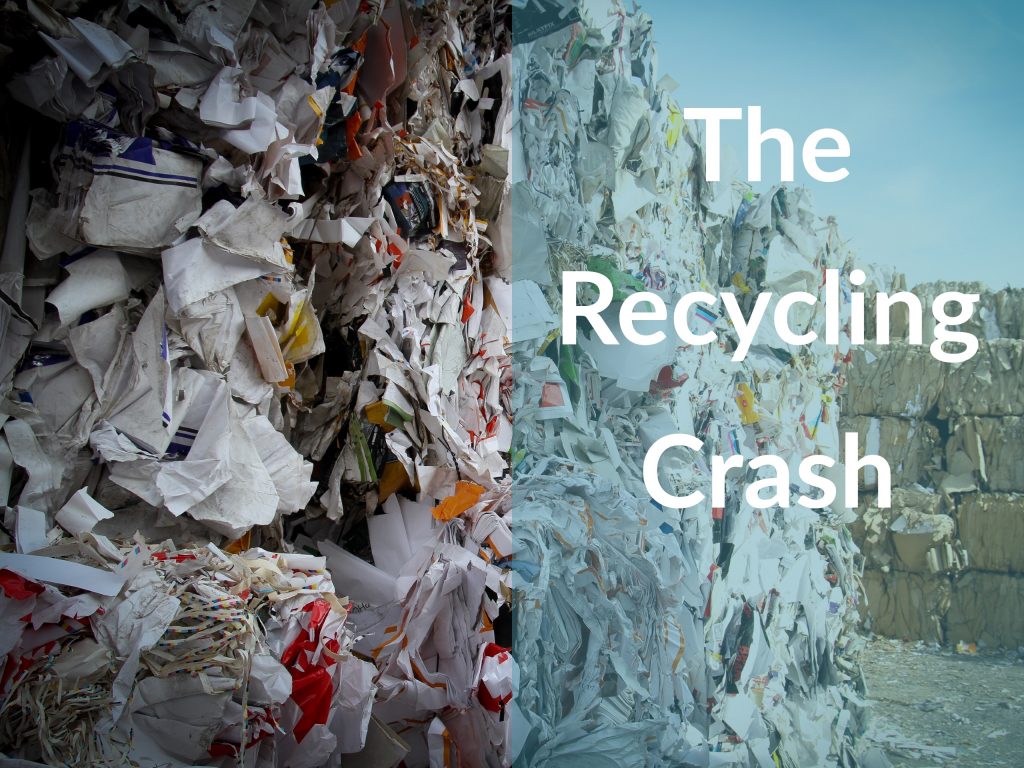How a Chinese ban and careless recycling habits by households and businesses led to a market collapse in recyclables.

In this episode you’ll learn:
- How modern recycling started.
- What has caused recyclables prices to crash.
- What is aspirational recycling.
- Why recycling is not enough given the world is drowning in plastic.
Show Notes
The 50th Anniversary of Curbside Recycling – Chaz Miller – Waste360
RecyclingMarkets.net – Current and historical prices for recyclables
Your Recycling Gets Recycled, Right? Maybe, or Maybe Not – New York Times
The Economics of Recycling in the US—Can It Pay for Itself? – Marc Rogoff – Forest Daily News
NWRA Releases Statement on China’s Ban – Waste360
We Made Plastic. We Depend On It. Now We’re Drowning In It – National Geographic
Episode Sponsors
Episode Summary
The biggest market crash facing the United States today isn’t entirely economic in nature. It’s actually surrounding the idea of recycling and recyclable goods. Recycling is a service that most communities require and demand. But is it economical? Why has the market crashed in recent months? What are the solutions? This episode of Money For the Rest of Us will answer all that and more, so be sure to listen.
What are the current values of recyclables, given the market crash?
Most types of recyclable products have fallen steeply in price. Mixed paper prices have fallen 98% in the past year. Corrugated cardboard has fallen 48% and plastics ranked 1 to 7 have fallen 78%. Co-mingled plastics, aluminum, and steel have been holding steady or even increasing, however, the vast majority of recyclables aren’t bringing in the high returns they used to. In areas such as the Pacific Northwest, you even have to pay a company to take it off your hands. What changed? Be sure to listen to this episode to find out.
What has caused this massive market crash?
The biggest influencer in the recyclables market crash was China’s decision in January 2018 to ban imports of 24 different types of recyclable materials. Americans recycle 66 million tons of material each year, and much of this material used to be sent overseas to be sorted, cleaned, and processed. However recyclable exports to China fell 35% in the first 2 months after the ban, and future rates aren’t looking favorable. Now, all of this recyclable material has nowhere to go. To get the full story behind the China ban and how it impacts the US recycling industry, be sure to catch the full audio for this episode.
The 5 main ways we can improve our recycling habits
To solve the market crash issue, Americans need to rethink their recycling habits. The problem with “aspirational recycling,” or thinking everything can be recycled just because we want it to, is a contributing factor to this complex issue. 5 ways to combat the recyclable market crash and current mindset about recycling are featured on this episode of Money For the Rest of Us. Here they are:
- Understand that recycling isn’t going away
- Consider recycling rate stabilization funds
- Consider banning certain materials at specific plants to reduce contamination and mixed goods
- Revamp educational programs about recycling
- Develop recycling markets right here in the US
What’s the real solution to the recycling market crash issue?
Even with all the great strategies discussed on this episode, simply recycling in better ways isn’t enough to solve the true issue. Everyone has to start considering the life cycles of the products we use every day. Changing the way countries around the world handle waste and preventing it from entering our waterways and contaminating our land is the real solution – basic recycling is just a temporary fix to a much larger issue.
Episode Chronology
[0:42] Why the recycling business is currently crashing and collapsing[4:28] The current value of recyclables, given the market crash
[8:09] What has caused this crash in recycled goods?
[9:32] The problem with “aspirational recycling”
[14:38] Why we have to do better at recycling
[22:05] The true heart at the of the recyclables market crash issue
